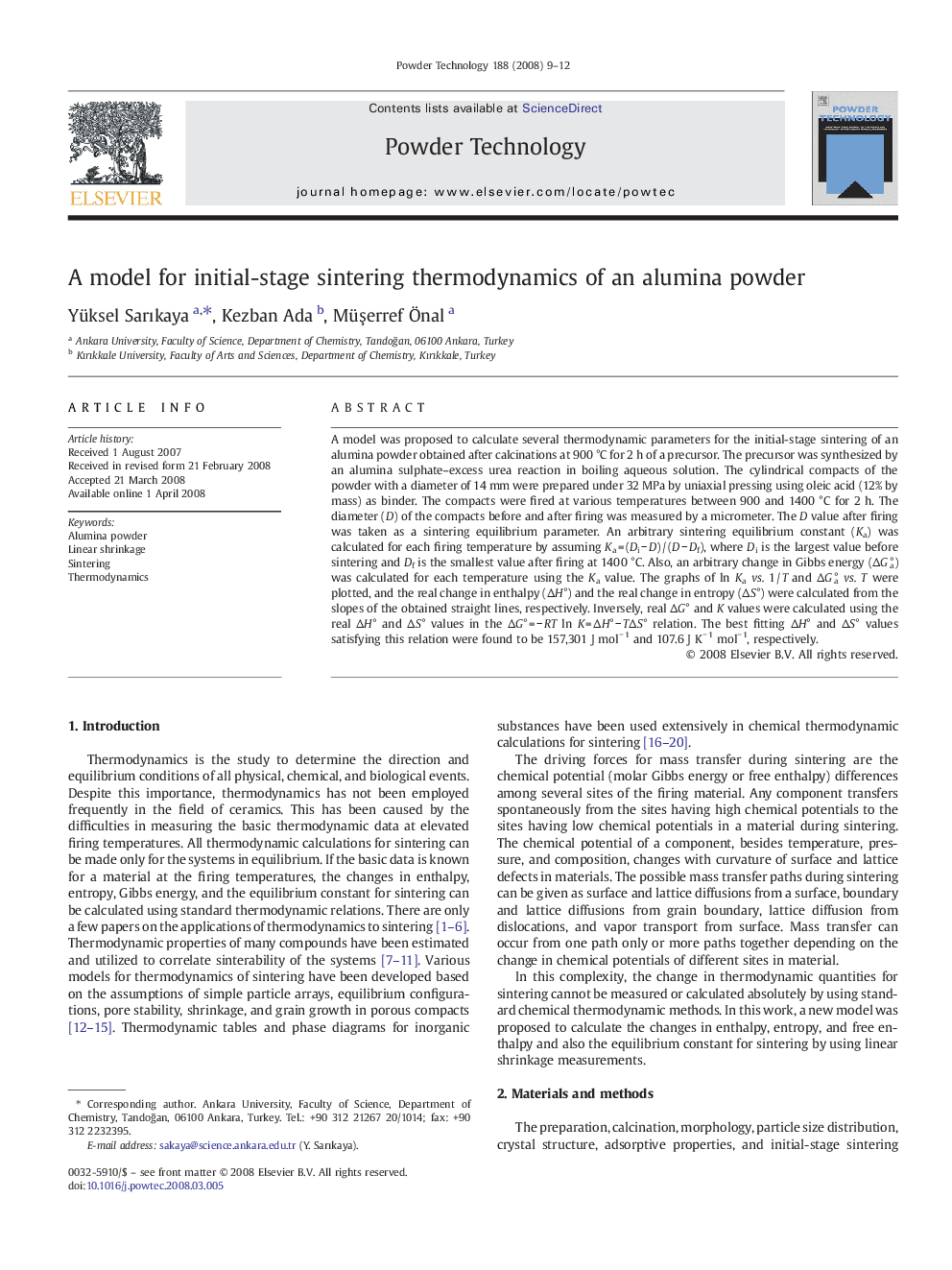| Article ID | Journal | Published Year | Pages | File Type |
|---|---|---|---|---|
| 238687 | Powder Technology | 2008 | 4 Pages |
A model was proposed to calculate several thermodynamic parameters for the initial-stage sintering of an alumina powder obtained after calcinations at 900 °C for 2 h of a precursor. The precursor was synthesized by an alumina sulphate–excess urea reaction in boiling aqueous solution. The cylindrical compacts of the powder with a diameter of 14 mm were prepared under 32 MPa by uniaxial pressing using oleic acid (12% by mass) as binder. The compacts were fired at various temperatures between 900 and 1400 °C for 2 h. The diameter (D) of the compacts before and after firing was measured by a micrometer. The D value after firing was taken as a sintering equilibrium parameter. An arbitrary sintering equilibrium constant (Ka) was calculated for each firing temperature by assuming Ka = (Di − D) / (D − Df), where Di is the largest value before sintering and Df is the smallest value after firing at 1400 °C. Also, an arbitrary change in Gibbs energy (ΔG a°) was calculated for each temperature using the Ka value. The graphs of ln Kavs. 1 / T and ΔG a° vs. T were plotted, and the real change in enthalpy (ΔH°) and the real change in entropy (ΔS°) were calculated from the slopes of the obtained straight lines, respectively. Inversely, real ΔG° and K values were calculated using the real ΔH° and ΔS° values in the ΔG° = − RT ln K = ΔH° − TΔS° relation. The best fitting ΔH° and ΔS° values satisfying this relation were found to be 157,301 J mol− 1 and 107.6 J K− 1 mol− 1, respectively.
Graphical abstractA model was proposed to calculate some thermodynamic parameters for the initial stage sintering of an alumina powder. The alumina compacts were fired at various temperatures between 900 and 1400 °C for 2 h. The diameter (D) of compacts after firing was taken as a sintering equilibrium parameter. An arbitrary sintering equilibrium constant (Ka) was calculated for each firing temperature by assuming Ka = (Di − D) / (D − Df), where Di is the largest value before sintering and Df is the smallest value after firing at 1400 °C. The relations between thermodynamic parameters are found as follows: ∆G° = − RT ln K = ∆H° − T∆S° = 157,301 − 107.6TFigure optionsDownload full-size imageDownload as PowerPoint slide
